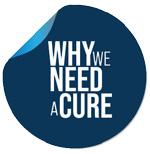5 Reasons We Need a Cure



We won’t end HIV/AIDS without one
More than 40 years into the global HIV/AIDS epidemic, we’ve made enormous progress. Yet in spite of our progress on treatment and prevention and the billions invested through international programs such as PEPFAR, 10 million people living with HIV still don’t have access to treatment. We know how to minimize the risk of HIV transmission through antiretroviral drugs, PrEP, condoms, voluntary medical male circumcision, and syringe exchange programs. Yet there were 1.3 million new infections in 2022. To end AIDS we need a preventive vaccine. And we need a cure.

Thousands are still dying
Left untreated, HIV remains a deadly virus. In 2022, 630,000 people died of AIDS-related illnesses—roughly one death every minute. If funding for global HIV treatment and prevention programs is cut, that number is sure to increase … dramatically.

The cost is unsustainable
Treatment for HIV remains a lifelong proposition and the lifetime medical cost of a single HIV infection in the U.S. is estimated to be around $420,000. This places an enormous burden on individuals and on government programs such as Medicaid and Medicare. While the per-person cost of treatment is lower in many countries, those with limited resources are hard pressed to cope with the burden of HIV, on top of other prevalent diseases and conditions such as TB, malaria, Covid, cancer and heart disease, to name a few.

A cure will end HIV-related stigma
To this day, an HIV diagnosis comes with the added, and unwelcome, burden of stigma. Anti-stigma and HIV awareness campaigns seem to have little lasting impact, and stigma persists in every part of the world even though HIV is a treatable disease and people who are virally suppressed cannot transmit the virus to others. The problem is that currently available treatment doesn’t eliminate the virus. The availability of a cure that permanently removes HIV from a person’s body would change that.

HIV is a driver of other deadly diseases
Since HIV depletes the immune system, it’s no surprise that the virus makes people susceptible to a range of other diseases and conditions. One in 10 people with active TB are also living with HIV, and TB is the leading cause of death for people with HIV. Other common co-infections include hepatitis B and C and human papillomavirus. People with HIV are more likely to have cardiovascular disease and are at an increased risk of heart attacks and stroke. Having HIV may also make people more vulnerable to certain co-infections, and in some cases having co-infections can increase vulnerability to HIV. A cure for HIV would substantially reduce the incidence of these often deadly co-conditions.
